From Habitat magazine - issue 04
Energy-saving features in two innovative Auckland houses offer lessons on insulating our homes more effectively. One is the NOW Home, a live research project undertaken by Beacon Pathway; the other is Arhaus Group’s flagship house in Hobsonville.
The NOW Home is a research project set up to test ways of making sustainable living more available. It’s the brainchild of Beacon Pathway, a research consortium funded by private shareholders and the Government’s Foundation for Research, Science and Technology. Beacon aims to “create homes and neighbourhoods that work well into the future and don’t cost the earth”. Its work in the area of sustainability includes not only resource conservation factors, but also personal health, affordability, and performance.
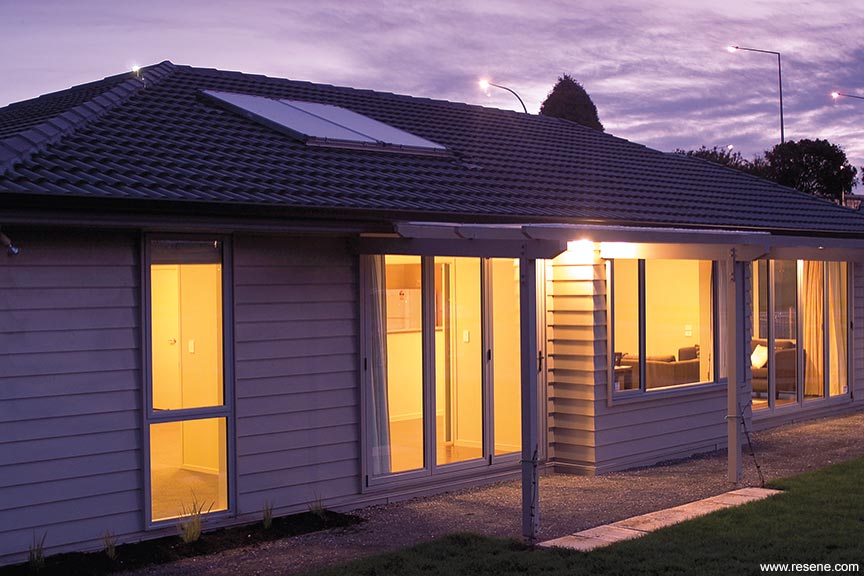
Tenants in the NOW Home in Auckland’s New Lynn, are currently being monitored so Beacon can collect and collate data on the house’s performance. Any findings and recommendations will be used to inform consumers, educate builders and manufacturers, and provide policymakers with accurate, objective data about how our buildings perform and how we can live in a more sustainable manner.
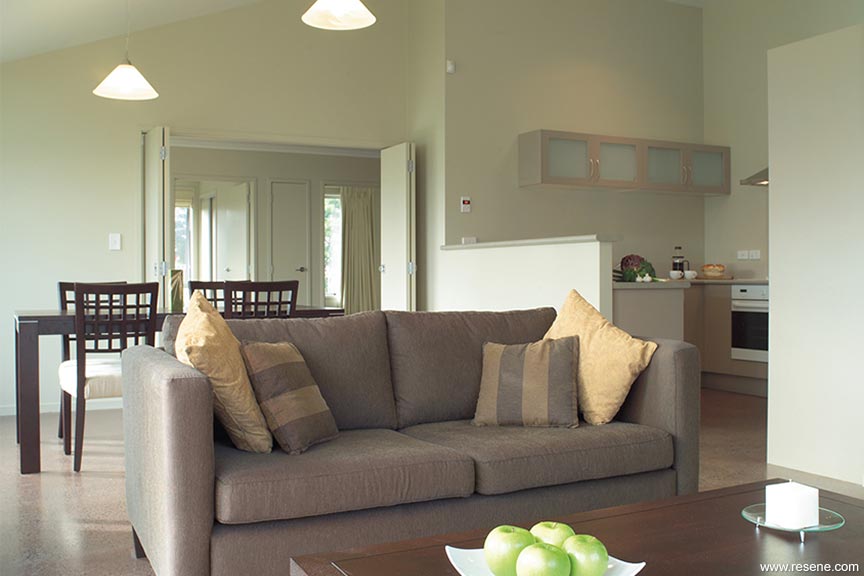
There is no in-built space heating in the home, nor is there a covering in the kitchen and living areas. The exposed concrete slab floor becomes a thermal storehouse, absorbing energy from the sun during the day and releasing it as heat at night as the house cools. The exposed concrete provides an attractive, hard-wearing surface, eliminating the need for treated timbers or particle board glues.
When the concrete floor heats up, it warms the ground as well. Tests show that any heat loss from the floor occurs in a 1m area around the perimeter. To counter this, sheets of polystyrene were placed around the footings and up the outside to the floor height of 100mm above ground. The polystyrene is protected with fibre cement board, and metal flashings under the weatherboards prevent any water penetration.
Glass wool insulation was used in the walls and ceilings, with more installed than the minimum requirement specified in the Building Code. Fibreglass is a well-proven insulation material, and is environmentally sustainable, being made from 80% recycled glass.
This feature reduces heat loss from the windows, condensation and dampens outside noise.
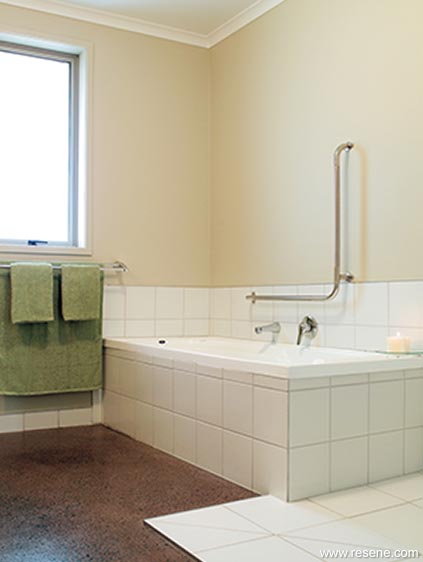
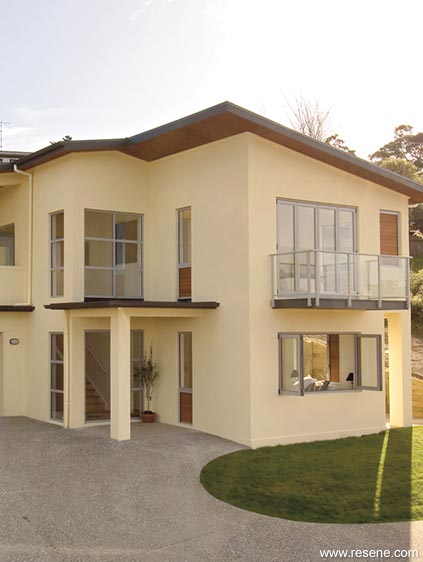
The eaves of the NOW Home are 600mm deep. In the heat of summer, most of the floor is shaded, but in the winter, when the light is lower, it enjoys full sun. These built-in energy features mean no other heating is required in the NOW Home.
“There are probably only 10 days a year when the occupant would need a space heater to keep the temperature above 18°C,” says Nick Collins, Beacon’s general manager. “Already, the NOW Home’s tenants’ power bills are almost 40% lower than what they’ve paid previously.”
Arhaus is an Auckland design-and-build company established by two British couples in 2004. They work with respected architects and trusted suppliers, using well-researched materials, to provide good-looking, energy-efficient and healthy houses. Arhaus Group focus on passive solar design principles, to maintain constant temperature levels in their houses year-round.
To help keep heat in its showhome, Arhaus used Ecofleece®, a 100% pure New Zealand wool and polymer blend that forms a fluffy insulation blanket. “Wool is an abundant natural material, and the fibres are hollow, which allows them to retain and release moisture vapour. Wool also absorbs formaldehyde, a harmful gas released from new building products, such as MDF,” says Nat Holloway, a director of Arhaus.
The house also features 40mm-thick sheets of expanded polystyrene installed under the entire concrete slab floor. Arhaus also believes double-glazing is essential. “The insulation provided by a single pane of glass is negligible. Double-glazing is gradually becoming more affordable as the demand for it increases. By using Low-E, or low-emittance glass, and argon-filled double-glazing, the heat loss can be reduced to half that of single glass panes. Our new Arhaus houses also don’t have many windows to the south or opening ones to the south-west,” says Nat.
Older houses, with their draughty sash windows, high ceilings and uninsulated floors, can be a challenge to insulate. These tips will help reduce energy costs and limit mould growth.
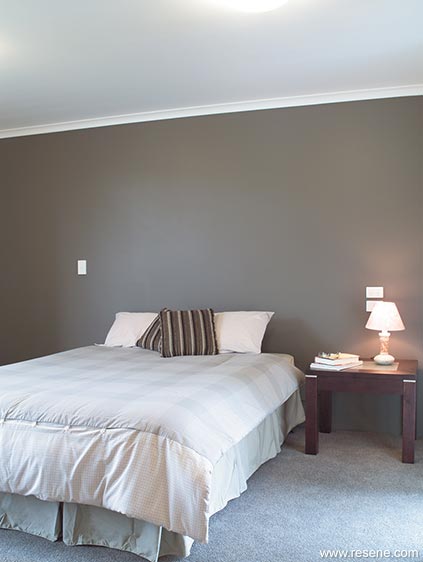
Ceiling: line the ceiling with glass wool or wool insulation and prevent 42% of heat loss. “The cheapest, easiest, most effective place to insulate, is the ceiling space,” claims Nat.
Floors: install insulation under wooden floors, to eliminate 12% of your heat loss.
Walls: investigate wall insulation options – they cause 25% heat loss.
Windows: 12% of heat is lost through single-pane windows. Draught-proof your windows, hang thermal drapes, or replace single-glazed windows with double-glazing.
Hot water cylinder: PinkBatts® offers a hot water cylinder wrap for electric cylinders that have a 50mm clearance.
An R-value is a measure of a material’s thermal resistance. The higher the R-value, the more resistant it is to transmitting heat and the higher its insulation value. For timber-framed houses in Climate Zones 1 and 2 (North Island, excluding the mountains), the Building Code specifies a minimum overall rating of R1.5 for walls and R1.9 for the ceilings. Arhaus specifies insulation R-values of R2.2 for walls and R3.2 for ceilings in its houses.
Before undertaking building renovations, check out www.dbh.govt.nz so you know your rights and responsibilities, or to download copies of the guides published by the Department of Building and Housing.
words: Sue Reidy
pictures: Craig Robertson Photography
Search habitat magazine stories
Printed copies of habitat highlights are available from late March 2024 at Resene ColorShops and resellers, while stocks last. You can view back issues of habitat magazine online.
Specifiers:
If you have an idea, project or story that you think would suit habitat, we’d love to hear from you. Please drop us an email with your details and include photos if submitting a project.
Sign up for a DIY card and Save! Australia | New Zealand